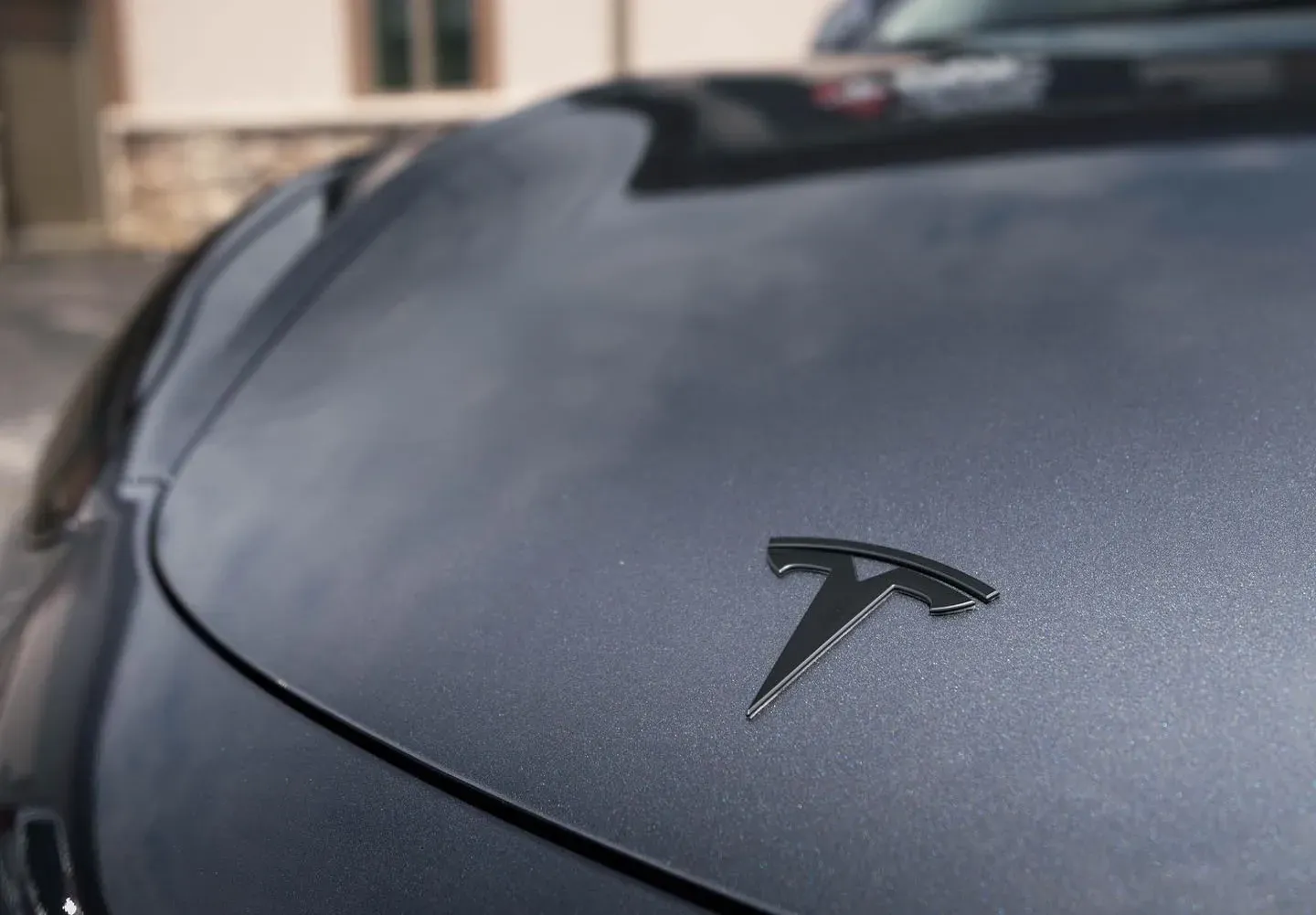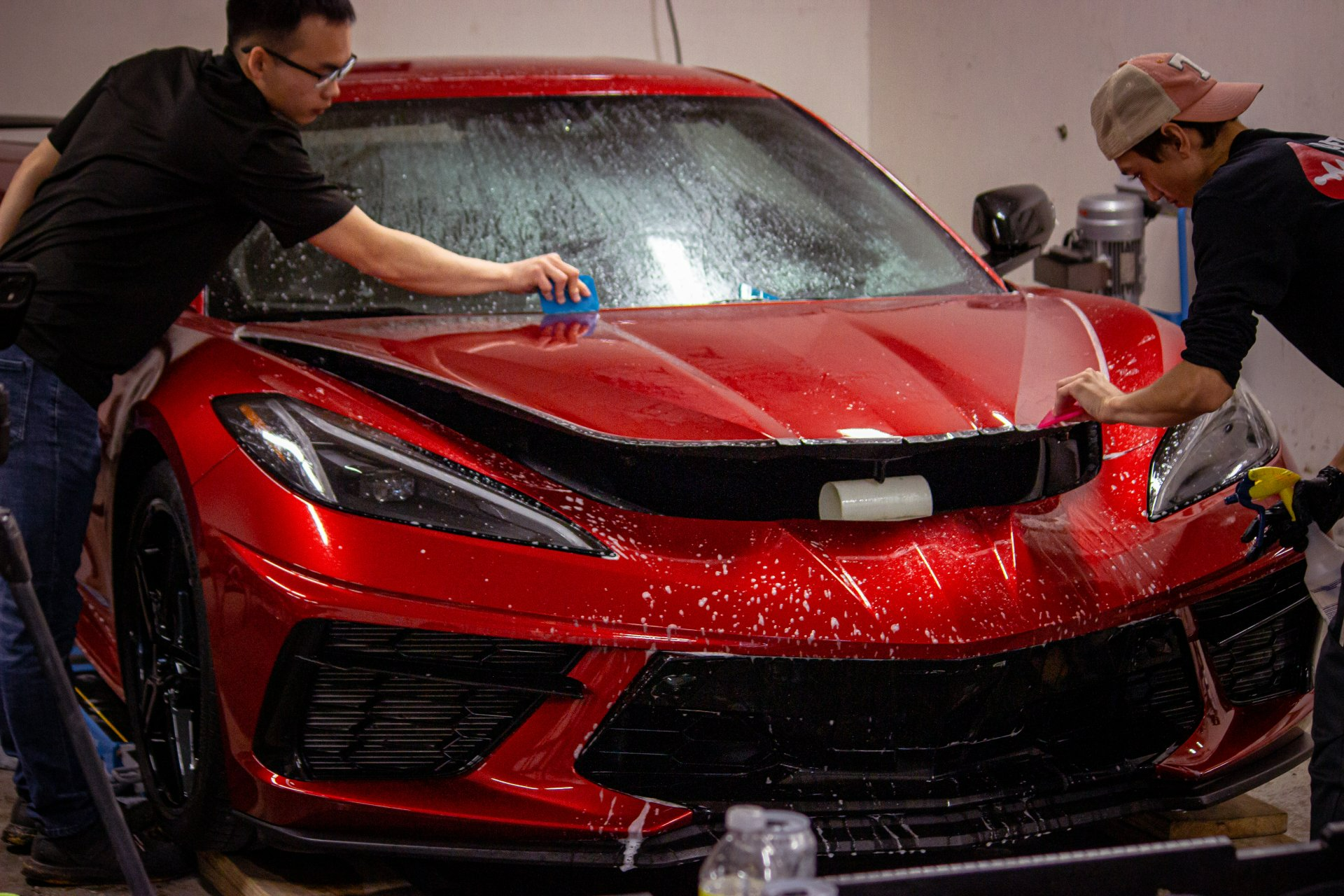The Detail Doc Blog
Road Debris and Ruin Paint? How PPF Protects Your Vehicle's Finish
(989) 244-0505 GET SCHEDULED NOWEvery time you hit the road, countless tiny hazards are waiting to mess up your car's paint. Most drivers don't realize how much everyday debris—like gravel, road salt, or even tree branches—can chip, scratch, and dull a vehicle's finish over time. Protecting your car isn't just about keeping it looking nice; it's about avoiding costly repairs down the line. In this article, we'll break down the threats road debris poses and explain how
Paint Protection Film (PPF) acts as a shield to keep your paint safe and shiny for years.

Common Types of Road Debris and How They Damage Your Vehicle’s Paint
When driving, vehicles are constantly exposed to different types of road debris. From high-speed gravel to road salt during winter, these elements can cause significant damage to your vehicle’s exterior. Understanding how these materials affect your car's paint is crucial in recognizing why solutions like PPF have become essential for maintaining a car’s appearance and value.
Gravel and Small Stones
Among the most relentless offenders are gravel and small stones, which are commonly found on highways and residential streets. While these tiny particles might seem harmless, they become dangerous when they're hurled at your vehicle at high speeds, particularly on highways where vehicles travel in excess of 60 miles per hour. Even a small pebble, no larger than a marble, can penetrate through several layers of paint and clear coat, leaving behind an unsightly chip that exposes bare metal beneath.
This isn't just a cosmetic issue. Once the paint is chipped and metal is exposed, the vehicle becomes vulnerable to rust and corrosion. The damage doesn't stop there—it spreads quickly, undermining the structural integrity of the vehicle's body. Over time, multiple chips and scratches will accumulate, not only marring your car’s appearance but also leading to expensive repairs and a significant drop in resale value.
Construction Materials
Construction zones are another major source of damage to vehicles. Debris like screws, nails, bolts, and chunks of concrete are commonly found in work zones and along highways. These materials are far more damaging than gravel, as they can leave deep gouges in your car’s paintwork. Unlike the minor chips caused by gravel, these types of damage often cannot be fixed with simple touch-ups. In many cases, they require professional repairs or even full body panel replacements.
For drivers in Michigan, where highways like I-75 through Saginaw or US-10 near Midland are often surrounded by construction, the risk of encountering these types of debris is heightened. In these areas, vehicles face a significantly higher chance of sustaining serious damage from larger pieces of debris.
Organic Matter
While less dramatic than gravel or construction debris, organic matter such as tree branches, leaves, and twigs can also contribute to paint damage. These materials can cause surface scratches and dull the paint finish over time. In Michigan, where vegetation is abundant, especially in the spring and summer months, these small abrasions can accumulate slowly, diminishing the vehicle’s shine.
The seemingly harmless act of parking under a tree or brushing past shrubs lining rural roads might not cause immediate damage, but these incidents compound over months or years. Eventually, your vehicle will lose that glossy, showroom appearance due to the microscopic scratches caused by organic debris.
Road Salt and Sand
Michigan winters bring their own set of threats to vehicle paint. Road salt, which is commonly spread on highways and streets to prevent ice buildup, accelerates paint corrosion. It holds moisture against metal surfaces for longer periods, which can lead to rust if left unaddressed. Meanwhile, sand acts as an abrasive, gradually wearing away the car’s clear coat and causing microscopic scratches that are difficult to see but accumulate over time.
During the freeze-thaw cycles typical of Michigan winters, moisture trapped in paint chips can freeze and expand, further widening cracks and increasing the risk of corrosion. Even when the damage isn’t immediately visible, these forces work quietly to degrade the vehicle’s finish and create long-term risks to its appearance and structure.
How Debris Damages Vehicle Paint
When pieces of gravel, sand, or construction scraps strike your vehicle at highway speeds, the results aren’t just cosmetic. The outermost layer of your vehicle’s paint, known as the clear coat, is relatively soft compared to the hard materials it encounters on the road. While the clear coat generally ranks about 2 to 3 on the Mohs hardness scale, gravel and stones can score 6 or 7, meaning these tiny objects literally scrape away the paint’s layers, much like sandpaper.
This leads to chips and scratches that expose the bare metal beneath the paint. What starts as a small chip can quickly turn into a much bigger issue. Once the paint is breached, moisture from rain, snow, or humidity seeps into the exposed metal, causing rust to form. The rust then spreads outward, damaging the surrounding paint and compromising the car's integrity.
Additionally, debris can cause a condition known as "road rash." This occurs when debris doesn’t simply strike the surface but skids or grinds across it. Road rash leaves long, scuff marks that dull the paint’s finish and cause microscopic grooves. Over time, these abrasions accumulate, making your vehicle look faded and worn.
The Chain Reaction of Damage
Just like a small crack in a windshield can eventually spread into a major flaw requiring a full replacement, a tiny chip in your car's paint can set off a chain reaction of damage. Those initial dents and chips allow moisture and contaminants to reach the metal underneath, leading to rust, discoloration, and even bubbling on nearby surfaces.
If left unchecked, the damage can continue to spread, especially in high-impact areas like bumpers, hoods, and fenders. This is particularly true for drivers in Michigan, where the combination of heavy traffic, ongoing construction projects, and harsh winter conditions multiplies the risk of paint damage.

Benefits of Paint Protection Film (PPF)
Paint Protection Film (PPF) is an advanced solution designed to shield your vehicle from the daily assault of road debris. Unlike traditional waxes or ceramic coatings that sit on top of the paint and offer limited protection, PPF acts as an invisible, multi-layered barrier that absorbs and disperses the impact of debris before it can reach the paint surface.
Industry tests have shown that vehicles protected with high-quality PPF experience up to a 99% reduction in paint damage caused by debris impact. This statistic alone demonstrates how effective PPF is compared to older methods of vehicle care, which typically fail to provide long-lasting protection.
One of the key advantages of PPF is its self-healing properties. When the surface of the film is scratched, it can repair itself when exposed to heat, whether from the sun or a heat gun. This feature reduces the need for frequent touch-ups, saving both time and money.
In addition to its protective capabilities, modern PPF is optically clear, meaning it won’t distort or dull the original paint finish. Once applied, most people won’t even realize there is a protective layer on the vehicle, ensuring that your car’s factory gloss and color integrity remain intact.
PPF also offers UV protection, blocking harmful ultraviolet rays that cause fading and discoloration. For vehicle owners who spend a lot of time on the road or park outdoors, this feature helps preserve the vibrant, showroom-new look of the vehicle for years to come.
High-impact areas of your car, such as the front bumper, hood edges, side mirrors, and door sills, are most vulnerable to damage. PPF absorbs knocks and abrasions in these zones, preventing long-term damage and preserving your car’s finish.
Professional vs. DIY PPF Installation
When considering Paint Protection Film, one of the most important decisions is whether to install it yourself or hire a professional. Professional installation offers several advantages, including the use of precision-cut templates that ensure a perfect fit for your vehicle. Certified installers use CAD-designed patterns that are customized to your car's make and model, ensuring complete coverage without gaps or overlaps.
Professionals also work in controlled environments to minimize dust and other contaminants during installation. Their experience and specialized tools allow for a flawless finish, with self-healing properties working as designed for years to come.
DIY installation, on the other hand, can be a cost-effective option if you're up for the challenge. However, applying PPF at home requires patience, precision, and skill. Even small mistakes, such as misaligning the film or trapping air bubbles, can compromise both the appearance and effectiveness of the protection.
If you decide to go the DIY route, practice first on less visible areas of your car, such as the side mirrors, and ensure that you follow all manufacturer guidelines carefully. Use the recommended tools and cleaning products to avoid introducing contaminants that could prevent the film from adhering properly.
Ultimately, while DIY PPF kits can save money initially, professional installation is often worth the extra cost, especially if you're looking for long-lasting, high-quality protection.
Additional Tips for Preserving Your Vehicle's Paint
Beyond installing PPF, routine maintenance is crucial for keeping your vehicle’s paint in top condition. Regular washing removes dirt, road salt, and other contaminants that can erode the paint’s clarity. Choose a pH-neutral car shampoo and a soft microfiber mitt to avoid introducing micro-scratches that can dull the finish over time.
During Michigan's harsh winters, washing your vehicle more frequently helps remove corrosive road salt before it can cause damage. Always dry your car with a clean microfiber towel to prevent water spots from forming.
In addition to washing, waxing your vehicle every few months adds another layer of protection against UV rays and grime. Waxing helps maintain your car’s shine, and it provides a sacrificial layer that absorbs minor scratches, preserving the underlying paint.
Parking decisions also play a significant role in paint preservation. Whenever possible, park your vehicle in a garage or under a carport to protect it from sun damage, bird droppings, and tree sap. These elements can chemically damage the paint over time, causing discoloration and fading. If indoor parking isn't an option, look for spots away from trees to minimize the risk of sap or droppings.
Regularly inspect your vehicle for chips, scratches, or any signs of wear. Early intervention is key to preventing small issues from escalating into costly repairs.
Frequently Asked Questions About PPF
Can PPF be applied to older vehicles?
Yes, PPF can be applied to older vehicles, but preparation is key. A thorough paint correction is necessary to remove swirl marks, scratches, and oxidation before applying the film. This ensures that the PPF adheres properly and provides a smooth, flawless finish.
How long does PPF typically last?
High-quality PPF can last between 5 to 10 years, depending on the care it receives. Regular washing with gentle methods helps maintain its clarity and elasticity, while avoiding harsh chemicals or abrasive cleaning tools will ensure that the film lasts as long as possible.
What happens if your PPF gets damaged?
If your PPF gets scratched or damaged, the film has self-healing properties that allow minor scratches to disappear with heat. However, more severe damage, like deep gouges, may require the affected section of the film to be replaced. Fortunately, PPF is not an all-or-nothing application, so only the damaged areas need to be replaced.
Protect Your Investment Today
Protecting your vehicle’s finish from road debris is essential for maintaining its value and appearance over time. For expert advice and professional Paint Protection Film installation tailored to Michigan’s unique environment, don’t hesitate to contact us at The Detail Doc.
Call us at (989) 244-0505 or visit www.thedetaildoc.co/contact today to safeguard your ride with confidence.




